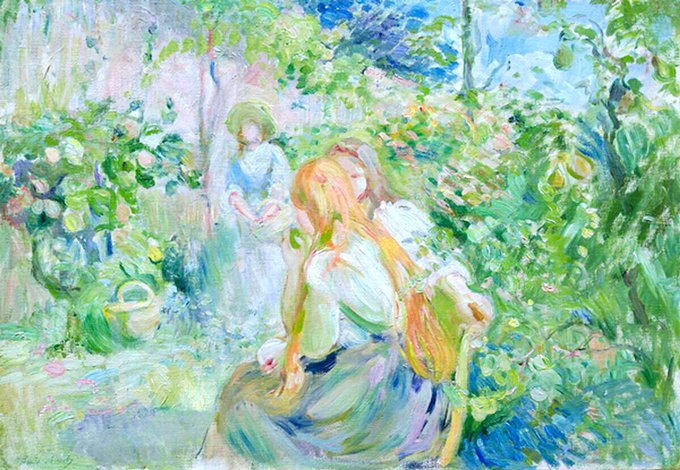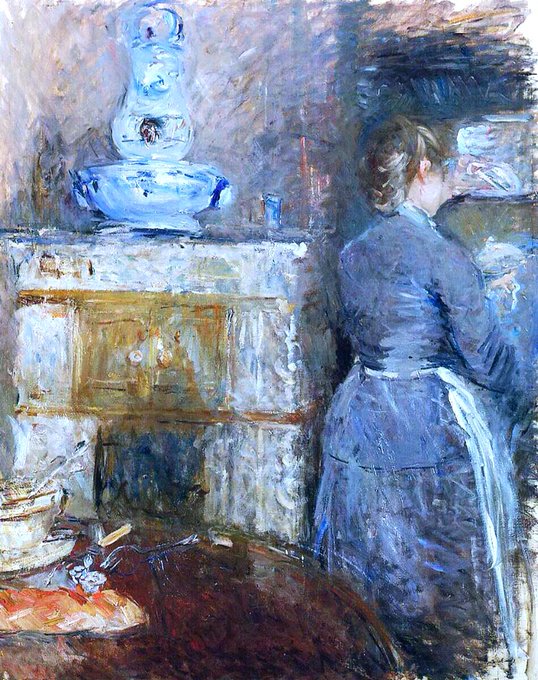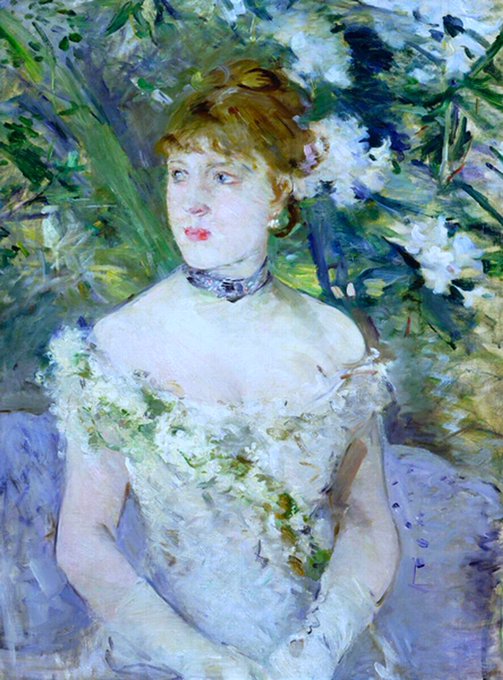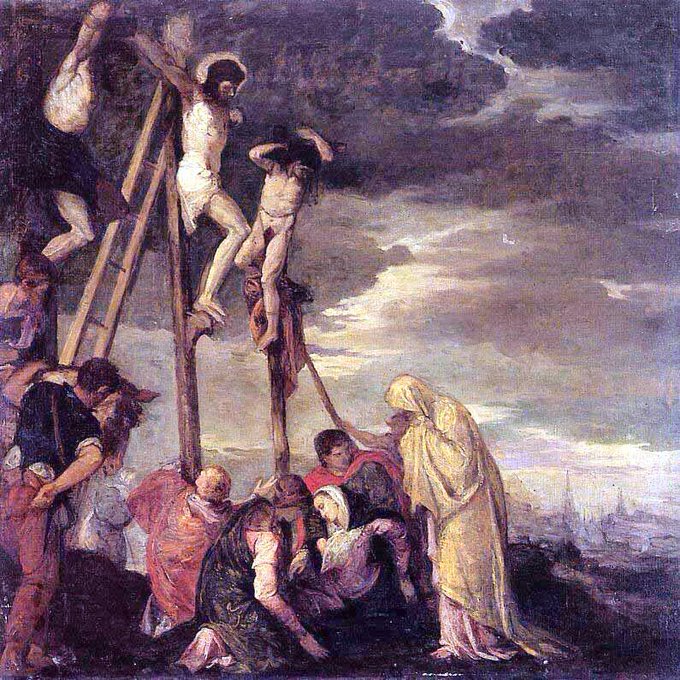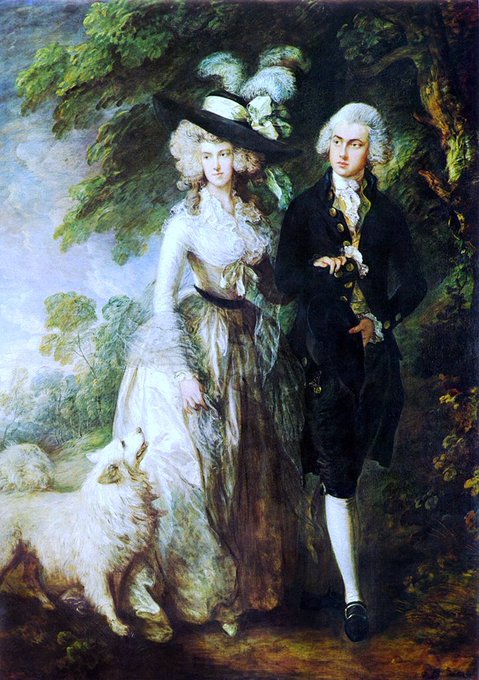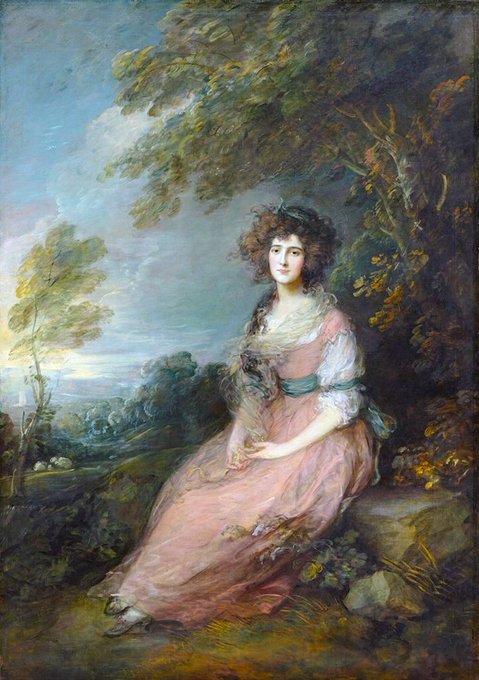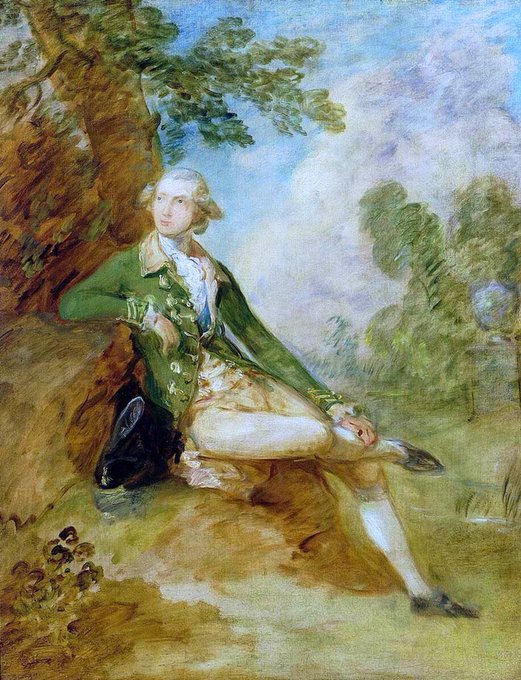Her final works are scintillating passages of white light caressed into glowing colour which chart the agency of women. In the Garden (1894), Laerte the Greyhound (1894), Sunset over a Lake (1894) & Portrait of Marcelle (1895). Search out her work!
Morisot’s art provides a window into the social changes of Bourgeois women in the 19th C & their evolving gain in autonomy. She died, sadly, before women got the vote. Little Girls At Window (1892), Two Nymphs (1892), Jeanne Pontillon (1893) & On the Balcony (1893)
The artist’s work is great art because of her technical genius, her observation of real life & her ability to share authentic emotion. Julie Manet & her Nurse (1880), The Dining Room of the Rouart Family (1880), The Wet Nurse (1880) & Woman Getting Dressed (c1880)
Academics dismissed Morisot until recently. They viewed her work as sentimental, thus allowing their own preconceptions to colour their (male) view. Woman in Black (1878), A Summers Day (1879), Women Picking Flowers (1879) & Young Woman Dressed for the Ball (1879)
Morisot’s philosophy was to paint light & dissolve colour into component parts for the eye to mix. Critics have described this as feathery brushstrokes but that is to miss her goal. The Psyche Mirror (1876), Woman with a Fan (1876), Tureen & Apple (1877) & Summer (1878)
Critics have sought to categorise her work into periods. A woman of Morisot’s ability does not fit into boxes, however, so such straitjackets are best avoided. Aboard a Yacht (1875), Eugène Manet on the Isle of Wight (1875), Dahlias (c1876) & Still Life (1876)
In the early 1870s Morisot explored the use of watercolours. Watercolour allowed her to complete studies quickly & with chromatic vivacity. Young Woman (1871), On the Balcony (1872), The Artist’s Sister & Niece (1872) & The Cradle (1872)
Morisot visited the Louvre to copy as part of her ‘finishing’ & met Corot, Monet & Manet there. Corot introduced her (1860) to painting ‘en plein air’ & to the immediacy of observation & depiction. She continued to train under artists until 1864. Copy of Veronese (1858)
In his final years Gainsborough created some of the most elegant English portraits of the 18th C. His Morning Walk (1785), Mrs Sheridan (1785-6) & Duke of Kent (c1787) are supreme examples of an artist who understood beauty & human frailty
As a foil to his society portraits he began his Cottage series where, influenced by Murillo, he sought to raise the stature of what he saw as honest peasant life. Cottage Girl (1785), Girl with Pigs (1782) & Cottage Door (1780s). The Cottage Girl is his masterpiece in
@NGIreland


